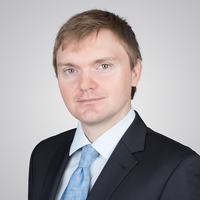Contributor Index

Biography
Modern-day physics’ most vexing mysteries concern structures that lie at the very ends of a scale that covers tens of orders of magnitude. However, mid-way between the extremely small (quantum particles and fields) and the extremely large (our universe), systems remain that we do not yet fully understand – not necessarily because of scales that are not directly accessible to experiment, but because of their intrinsic complexity. Examples of such systems abound, some more exotic, such as high-temperature superconductors, and some intriguingly mundane, such as Earth’s climate or the human brain.
During my studies of physics at the Heidelberg University in Germany I had the chance to work in several fields that have to deal with such complexity, in particular on the analysis of high-multiplicity particle collisions and on the study of glasses at very low temperatures. The next step towards neuronal systems came almost naturally as I started my work in the Electronic Vision(s) group at the Kirchhoff-Institute for Physics in Heidelberg, where I earned my Dr. rer. nat. (summa cum laude & Springer Thesis Award) under the supervision of Prof. Karlheinz Meier and Dr. Johannes Schemmel. My main area of research is bio-inspired AI, with a particular focus on ensemble phenomena in neural networks, Bayesian inference with spikes, learning in hierarchical networks and the development of beyond-von-Neumann architectures capable of embedding functional neural network models.
Currently, my home base is the Computational Neuroscience Group at the Department of Physiology, University of Bern, which I am co-leading with Prof. Walter Senn. I am also the founder and current leader of the theory and modeling department of the Vision(s) group in Heidelberg. I believe that there is much to learn from biology about cognition, but I am more of a functionalist when it comes down to actually building physical implementations – there are good reasons for airplanes not to flap their wings. In our groups, we therefore combine knowledge and methods from neuroscience, information geometry, the physics of classical complex systems, machine learning and microelectronics to design functional and robust neuronal network models and embed them into low-power, highly accelerated neuromorphic devices.
During my studies of physics at the Heidelberg University in Germany I had the chance to work in several fields that have to deal with such complexity, in particular on the analysis of high-multiplicity particle collisions and on the study of glasses at very low temperatures. The next step towards neuronal systems came almost naturally as I started my work in the Electronic Vision(s) group at the Kirchhoff-Institute for Physics in Heidelberg, where I earned my Dr. rer. nat. (summa cum laude & Springer Thesis Award) under the supervision of Prof. Karlheinz Meier and Dr. Johannes Schemmel. My main area of research is bio-inspired AI, with a particular focus on ensemble phenomena in neural networks, Bayesian inference with spikes, learning in hierarchical networks and the development of beyond-von-Neumann architectures capable of embedding functional neural network models.
Currently, my home base is the Computational Neuroscience Group at the Department of Physiology, University of Bern, which I am co-leading with Prof. Walter Senn. I am also the founder and current leader of the theory and modeling department of the Vision(s) group in Heidelberg. I believe that there is much to learn from biology about cognition, but I am more of a functionalist when it comes down to actually building physical implementations – there are good reasons for airplanes not to flap their wings. In our groups, we therefore combine knowledge and methods from neuroscience, information geometry, the physics of classical complex systems, machine learning and microelectronics to design functional and robust neuronal network models and embed them into low-power, highly accelerated neuromorphic devices.
Presentations
Focus Session

AI/Machine Learning/Deep Learning
Networks
Neuromorphic Systems
Parallel Algorithms
Post Moore’s Law Computing
